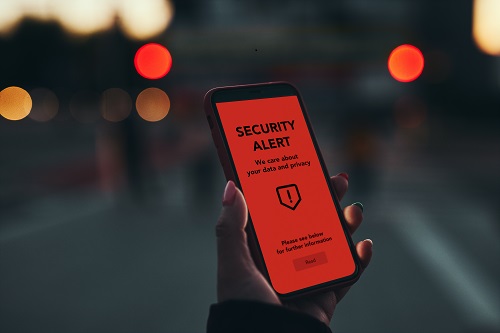Compromised Account: What to Do
Every year thousands of Americans lose money due to fraud, and in 2021 it was reported that a whopping $5.9 billion was lost1 to this very unfortunate circumstance. What’s even scarier is this number was a 70% increase from the year before. The thought of your account information being stolen is terrifying, but as instances of fraud are rising significantly it’s a very real possibility. If you find yourself in this situation, try not to panic! Here are some steps you can take to recover a compromised account and then keep it safe moving forward.
Report It
If you notice a suspicious transaction or a purchase you’re certain doesn’t belong to you then report it as soon as possible to your financial institution. The sooner you report the fraudulent activity the faster the situation can be remedied. Stopping the fraudster in their tracks early will also decrease the overall financial damage they can inflict. Many financial institutions have policies in place to protect their customers in the event of fraudulent activity and will be happy to open a dispute and investigate the fraud. However, regardless of the institution’s individual policies the Federal Trade Commission’s Fair Credit Billing Act says a consumer cannot be held liable for more than $502 of fraudulent transactions provided the fraud is reported within 60 days.
Cancel Your Cards/Change Account Numbers
If a fraudster is making unauthorized purchases on your account, then they have access to either your card number or your account number. To cut them off and stop the fraudster from making further purchases on your account you’ll need to cancel the account information they have access to. This is something your financial institution should do when you initially report the fraud to them, so there shouldn’t be a need for a separate phone call to complete this step. If you need immediate access to the account and can’t wait several days for a new card to arrive, ask if they will expedite the new card to you. Oftentimes, financial institutions will overnight a new card as a courtesy during instances of fraud.
Change Your Passwords
If your account has been compromised, it may be hard to tell how the fraudster has gained access to your account. It could be they’ve gotten a hold of a credit card you’ve lost, breached the database at someplace you’ve shopped before, or they could have gained access to your login information. To cover all your bases, you should change the password for your account so anyone using the old password will be locked out and you will be the only person with the new password who can access the account online. It’s also a good idea to change the password for all your accounts to be certain the fraudster won’t be able to access those accounts either.
Future Protection
The thought of a compromised account can be scary, but there are steps you can take to help prevent it from happening3 and to be alerted early if it does so you can nip it in the bud right away.
- Set strong passwords for your accounts using a mix of lower and uppercase letters, numbers, and special characters.
- Use a different password for every account.
- Set up multi-factor authentication.
- Monitor your credit report often.
- Set up fraud alerts which will encourage creditors to take extra steps to verify your identity before opening a new credit account in your name.
- Set up spend alerts on your accounts which will notify you of any purchases over a certain dollar amount.
Sources:
1Iacurci, Greg. (2022, Feb 22). Retrieved from: https://www.cnbc.com/2022/02/22/consumers-lost-5point8-billion-to-fraud-last-year-up-70percent-over-2020.html
2DeNicola, Louis. (2021, Apr 11). Retrieved from: https://www.experian.com/blogs/ask-experian/what-is-the-fair-credit-billing-act/
3Murray, Teresa. (2022, Mar 7). Retrieved from: https://pirg.org/edfund/resources/22-ways-to-protect-yourself-from-fraud-identity-theft-and-headaches/

 You must have JavaScript enabled to use this site.
You must have JavaScript enabled to use this site.
 For a better user experience consider upgrading your browser.
For a better user experience consider upgrading your browser.

